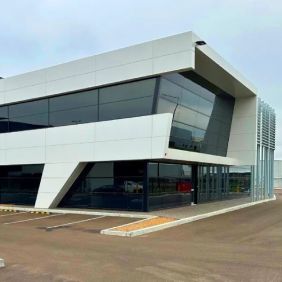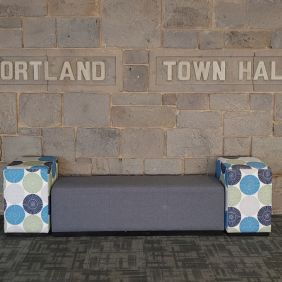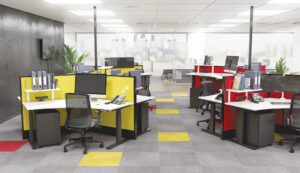
If you’re like most people, you probably spend a lot of time in your office. Whether you’re working, meeting with clients, or just catching up on some paperwork, your office is likely one of the places where you spend the majority of your day.
Because of this, it’s important to make sure that your office is as comfortable and functional as possible. If your office is outdated, cramped, or otherwise not up to par, it can make your workday a lot less enjoyable.
Is an Office Upgrade Necessary?
You might be wondering whether or not an office upgrade is really necessary. After all, if your office is currently functioning, why go through the hassle (and expense) of upgrading it?
With an upgraded office, you can be sure that you will enjoy a truckload of benefits. Ultimately, this ends up improving the overall productivity in your office. A proper office upgrade will improve the comfort of your employees, make your office more functional and organized, and give off a much more professional appearance to clients and customers.
Upgrading your office doesn’t have to be a major undertaking. Even small changes can make a big difference in how comfortable and productive you are while you’re working. Here are a few things to keep in mind when you’re considering upgrading your office:
Office Layout
The layout of your office should encourage productivity. If you’re constantly bumping into things or tripping over cords, it’s time for a change. An efficient office layout will help you get your work done more quickly and with less frustration.
Office Desk
Your desk should be positioned in a way that gives you plenty of space to move around. If your desk is too small or crammed into a corner, you won’t have enough room to work comfortably. Instead, opt for a desk that leaves plenty of room for you to spread out your work.
Office Chair
Your chair is another important consideration. You should choose a chair that is comfortable and supportive. A good office chair will help you stay productive by reducing fatigue and discomfort.
Office Lighting
The lighting in your office should be bright enough to work without causing eye strain. If your office is too dark, it can make it difficult to see what you’re doing. On the other hand, if it’s too bright, it can be hard to concentrate. The best lighting for an office is usually a combination of natural and artificial light.
Office Supplies
Having the right office supplies is essential for any business. If you don’t have the supplies you need, it can make your job much more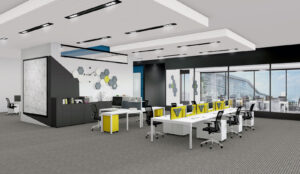 difficult. Make sure you have plenty of pens, paper, and other office supplies so you can stay organized and productive.
difficult. Make sure you have plenty of pens, paper, and other office supplies so you can stay organized and productive.
These are just a few of the things to keep in mind when you’re considering upgrading your office. By making a few simple changes, you can make your office more comfortable and efficient.
Crucial Changes in Your Office Upgrade
For a successful office upgrade, there are a couple of things, which are critical and cannot be compromised on. The following are some of the most important aspects of an office upgrade:
Comfort
The first and foremost thing that you need to consider while upgrading your office is comfort. If you are not comfortable in your office, you will never be able to work productively. Hence, it is important to make sure that your office is as comfortable as possible. You can do this by ensuring that the furniture in your office is comfortable and by ensuring that the lighting in your office is adequate.
Location
Another important aspect of an office upgrade is location. If you are not happy with the location of your office, you will never be able to work productively. Hence, it is important to make sure that you choose an office location that is convenient for you.
The size of your office is also an important consideration while upgrading your office. If you have a small office, you will never be able to work productively. Hence, it is important to make sure that you choose an office that is large in size.
Office Furniture
One of the most significant considerations of an office upgrade is the type of furniture you choose. If you choose the wrong type of furniture,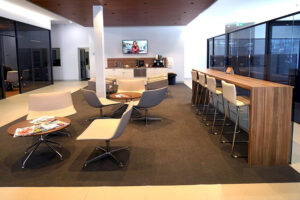 you will never be able to work productively. Hence, it is important to make sure that you choose the right type of furniture for your office. You can do this by taking the help of an interior designer.
you will never be able to work productively. Hence, it is important to make sure that you choose the right type of furniture for your office. You can do this by taking the help of an interior designer.
For instance, you can change from a standard office desk to an executive office desk, which will give your office the much-needed look of success and professionalism. The chairs, also play an important role in the comfort and look of your office and hence, you need to be very careful while choosing them.
Partitions and Walls
The partitions and walls of your office play a very important role in the overall look of your office. If you have a small office, you will never be able to work productively. Hence, it is important to make sure that you choose an office that has large partitions and walls.
Upgrading an office can mean tearing down the walls and partitions and starting from scratch. This will give you the opportunity to choose the right type of partition and walls for your office.
Lighting
Last, but not least you need to consider the lighting. The lighting in your office should be bright enough to work without causing eye strain. If your office is too dark, it can make it difficult to see what you’re doing. On the other hand, if it’s too bright, it can be hard to concentrate. The best lighting for an office is usually a combination of natural and artificial light.
The Bottom Line
Upgrading your office is a great way to improve your productivity and efficiency. However, there are a few things that you need to keep in mind while upgrading your office. By keeping the above-mentioned things in mind, you can be sure that your office upgrade will be a success.

